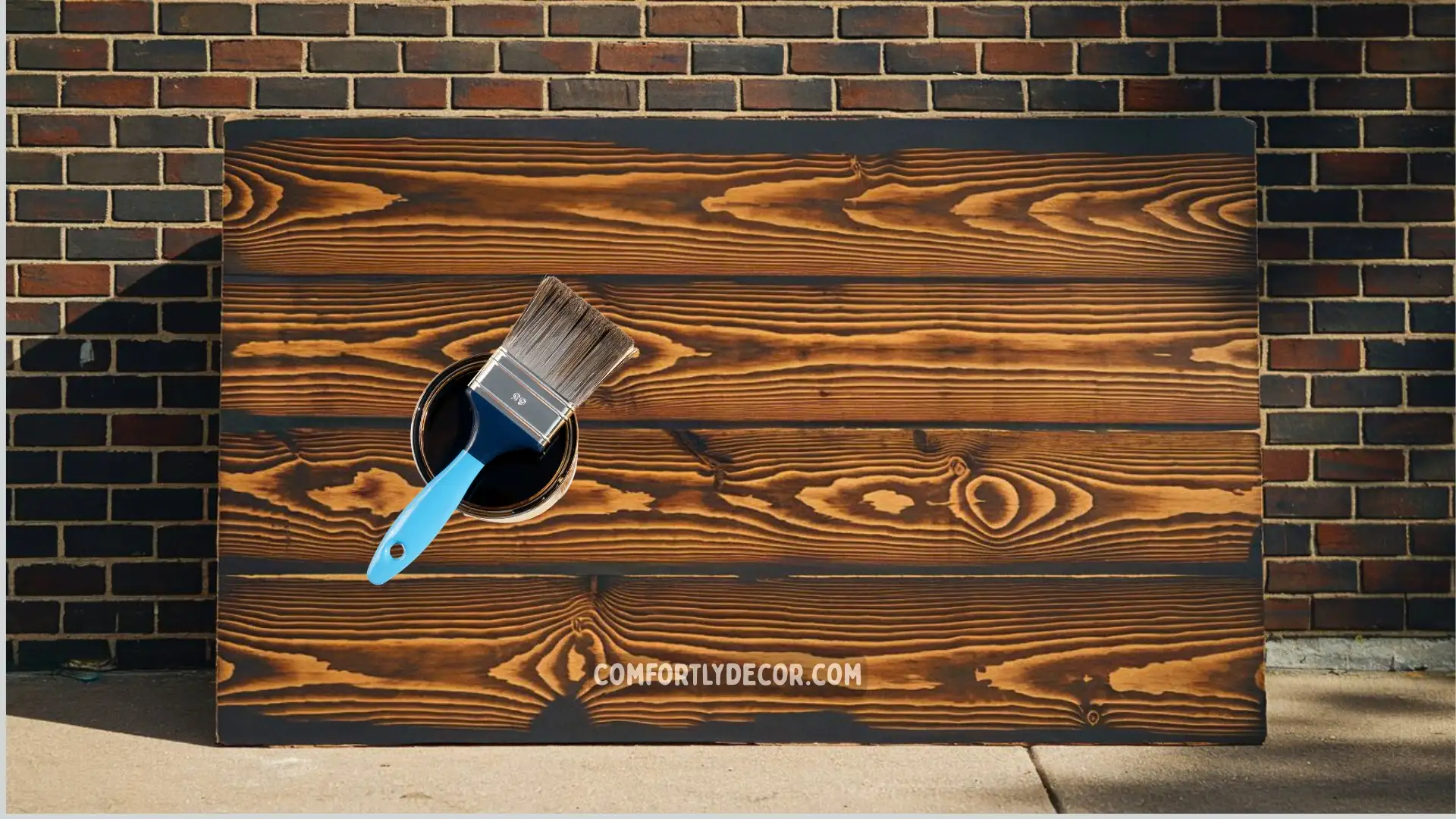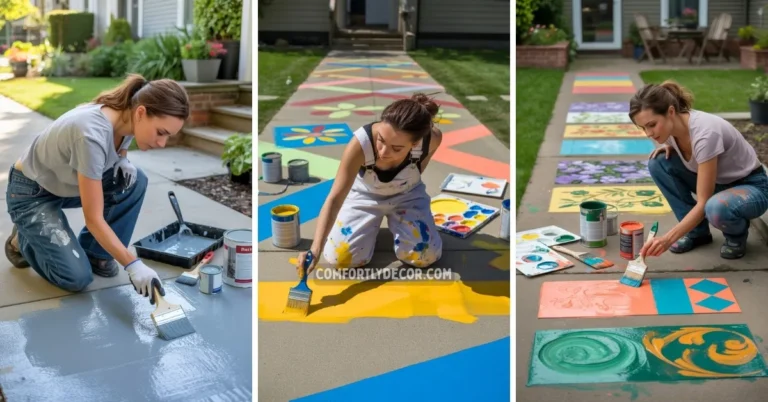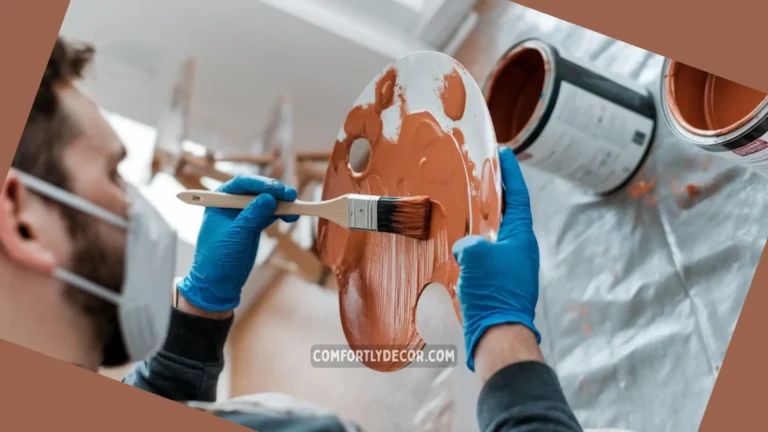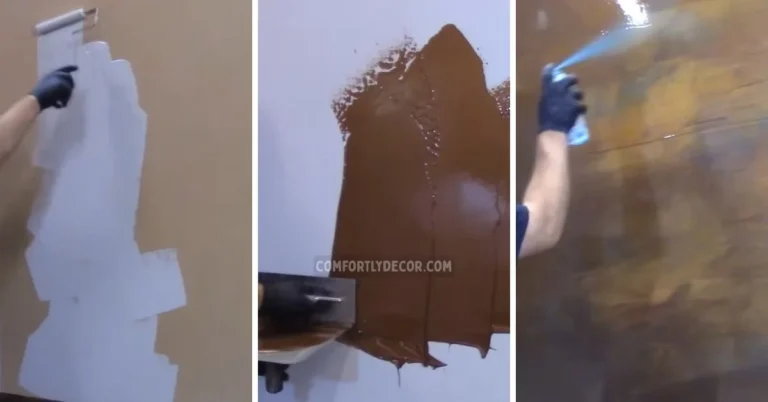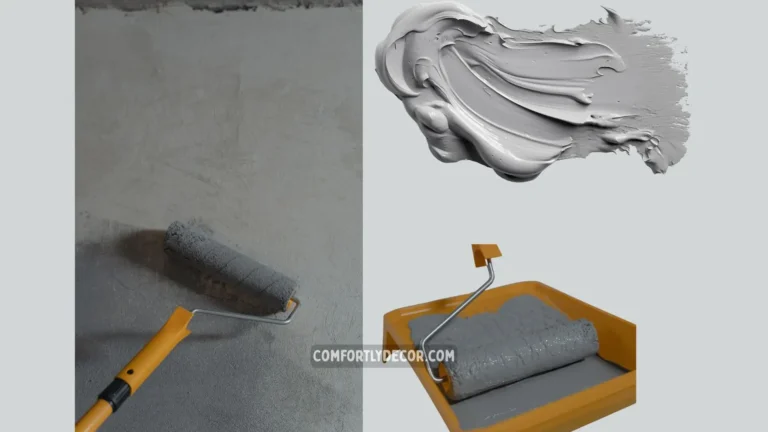How To Paint Cardboard To Look Like Real Wood: Easy DIY Technique
Ever looked at a plain piece of cardboard and thought, “Could this become something… spectacular?” I mean, sure, its primary purpose is basic packaging, but what if we could give it a glow-up and turn it into faux wood? Whether you’re sprucing up a prop, designing décor, or simply flexing those DIY muscles, learning how to paint cardboard to look like wood is the creative hack you didn’t know you needed. Don’t worry, I’ve got your back with this friendly step-by-step guide.
Why Make Cardboard Look Like Wood?
Cardboard’s cheap, lightweight, and easy to work with—but, let’s face it, it doesn’t scream luxury. The good news? With a little paint and some clever tricks, you can replicate the natural elegance of wood without spending a fortune. Think DIY wall panels, props for a play, or even custom furniture for your room on a shoestring budget. And did I mention it’s a lot of fun?
Now that we’re on the same page, let’s get into the juicy details.
Gather Your Supplies
Before we jump into the painting process, you’ll need a few essentials. Don’t panic; most of this is straightforward and budget-friendly.
Here’s what you’ll need:
- Cardboard (Obviously! Look for smooth, sturdy ones)
- Acrylic paints in wood-like tones (think browns, tans, and beiges)
- Paint brushes (varied sizes, including a small fine brush for details)
- A faux wood graining tool (optional but amazing for authentic textures)
- Sandpaper (medium grit)
- Primer (to help the paint stick better)
- Clear sealant or varnish for that polished wood finish
- A damp cloth (trust me, it’s not just for spills)
Have these ready? Awesome. It’ll make the process smooth and frustration-free.
Pro Tip: Reuse those Amazon boxes lying around. Sustainability and creativity go hand in hand, my friend.
Prepare Your Cardboard Surface
Sorry to break it to you, but you can’t just slap paint onto raw cardboard. Prep work is essential if you want that high-quality wood look. Here’s how to do it right:
- Clean the cardboard: Wipe it with a damp cloth to get rid of dust and debris. No one wants a gritty paint job.
- Sand it lightly: Cardboard can have some rough patches. Use medium-grit sandpaper to gently smooth it out. Bonus? Sanding helps the paint stick better.
- Apply primer: This step might sound boring, but trust me, it’s the secret to vibrant and longer-lasting paint. Use a primer designed for crafts or cardboard, and apply a thin even coat.
Got all that? Great! Now, your cardboard is prepped and ready to shine.
Create the Base Color
Now comes the fun part. Think of the base coat as the foundation of your faux wood masterpiece.
- Pick your base color: Depending on the type of wood you’re replicating, choose a shade that resembles it. Light tan for oak, rich reddish-brown for mahogany, or a deeper brown for walnut.
- Apply your base layer: Use a paintbrush or roller to evenly coat the cardboard in your selected base color. Long, smooth strokes are key. Don’t overdo the paint here; we’re going for a natural vibe.
- Dry it out: Tempted to touch it right away? Resist. Give it plenty of time to dry completely.
Pro Tip: Want that aged, rustic look? Brush a darker paint along the edges for a subtle shadow effect.
Add Realistic Wood Grain
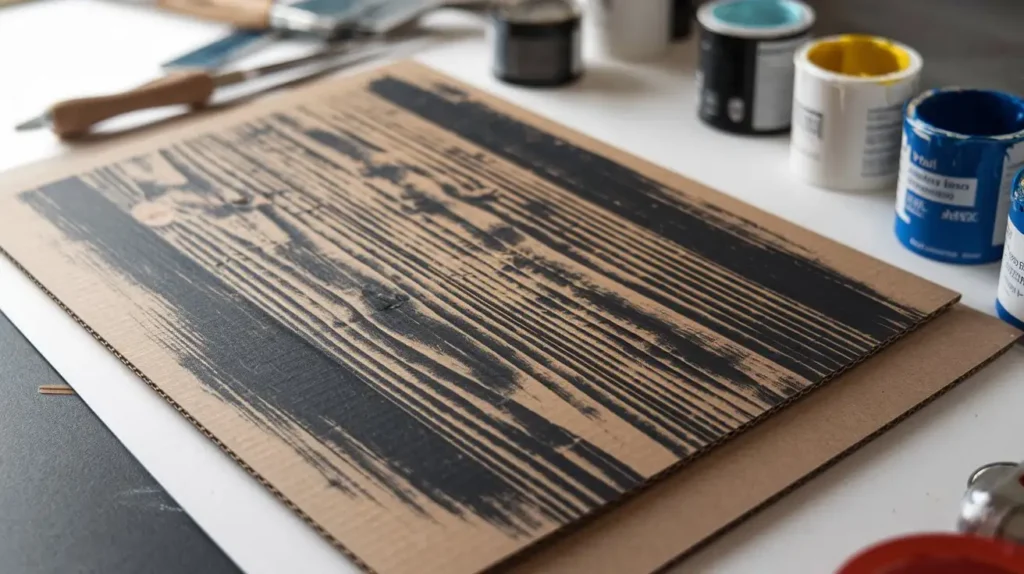
Here’s where the magic happens. Get ready to amaze everyone (including yourself).
Method 1: Use a faux wood graining tool
- Apply a thin layer of contrasting paint over your base coat. For example, go with a darker brown contrast.
- Quickly (this part’s important), drag the graining tool across the wet paint, rocking it side to side as you go.
- The result? Gorgeous wood grain patterns that look eerily real.
Method 2: Hand-paint the grain
If you’re feeling like an artist, grab a fine detail brush.
- Use a darker shade of paint to draw thin, wavy lines to replicate natural wood grain.
- Don’t stress if it’s not perfect. Real wood isn’t perfect either, which is kind of the beauty of this process.
Pro Tip: Study photos of real wood to mimic its texture and direction. Oak, for example, has bold patterns, while pine is more subtle.
Enhance with Stains and Aging
Want to take your faux wood to another level? Add some character with staining and aging effects. Here’s how:
Staining:
Use a wood-style stain or gently water down some dark acrylic paint. Brush it lightly over the grain to add depth and realism.
Distressing:
Sand lightly over edges and corners to give that natural worn-out look.
Voilà. Instant barn wood vibes.
Pro Tip: Don’t be afraid to experiment. Try adding streaks of lighter stain for extra dimension.
Add Final Details and Seal
You didn’t do all this hard work to have it ruined by a coffee spill, right? Here’s the finishing touch.
Seal the Deal
- Use a clear, matte varnish to protect your masterpiece. It also adds a subtle shine that mimics real wood.
- Apply carefully and evenly using a clean brush or roller.
Personalize It
- For added flair, paint on hardware details like hinges or handles. Maybe even toss in decorative nails for that true carpenter effect.
Done, and done. Step back and admire your handiwork. Looks like wood, doesn’t it? 🙂
Get Creative with Your Faux Wood
The best part about painting cardboard to look like wood is how versatile it is. Here are some ideas to inspire your next project:
- DIY wall panels: Perfect for budget-friendly room makeovers.
- Table centerpiece: Impress your guests without breaking the bank.
- Photography props: Because Instagram deserves your artistic genius.
- Miniature furniture: For dollhouses or whatever your crafty heart desires.
Honestly, the only limit is your own creativity.
FAQs
Wrap Up Your Faux Wood Journey
Believe it or not, you just turned boring ol’ cardboard into a stunning wood doppelgänger. And yep, it’s as satisfying as it sounds. From wall décor to DIY props, your new skill opens a whole world of affordable, creative endeavors.
Now go take on that stack of cardboard boxes like the DIY champ you are. You’ve got this.

I am Mindy Medford, a home décor, paint, and design specialist with over a decade of hands-on experience transforming ordinary spaces into cozy, personality-packed havens. Since 2013, I have been helping homeowners discover the art of beautiful yet practical design. I share my love for color, texture, and layout—making stylish interiors & exteriors feel achievable for everyone. Whether it’s picking the perfect paint shade or reimagining a small space, I’m here to guide and inspire.

